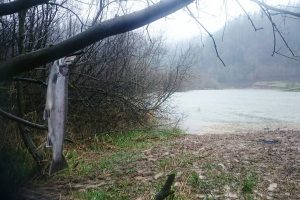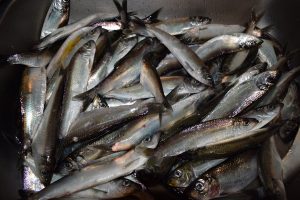
Salmon are anadromous fish, meaning they live in the ocean but are born and reproduce in freshwater. These remarkable creatures are easily recognized by the unique colors and markings on their bodies, which often change as they migrate between saltwater and freshwater. Salmon captivate food lovers, researchers, and outdoor enthusiasts.
History
For centuries, salmon have been a cornerstone of life for the Indigenous peoples of the Pacific Coast. Tribes would catch salmon during their upriver spawning runs and hold elaborate ceremonies to honor their return each year. These fish feature prominently in myths and legends, including one tale where salmon allegedly saved starving troops in 1778.
Biology and life cycle
Salmon embark on an incredible journey, migrating from the ocean to their freshwater birthplaces to spawn. Most species demonstrate an extraordinary ability to navigate back to the exact location where they were born. Upon arrival, females dig depressions in the riverbed to lay their eggs, which are then fertilized by males.
Shortly after spawning, the life cycle of the salmon comes to an end. However, their offspring embark on a treacherous journey downstream to the ocean, where they will grow, mature, and eventually return to repeat this remarkable cycle.
Video
Wild and Hatchery Salmon
The annual migration of salmon to freshwater spawning grounds exposes them to significant dangers, contributing to their population decline. To combat this, the U.S. Fish and Wildlife Service established the Hatchery System, which aims to protect fish species, including salmon. Hatcheries play a critical role in supporting native populations while sustaining opportunities for commercial and recreational fishing.
Salmon hatched in controlled environments often have higher survival rates than their wild counterparts. This approach to conservation traces back to 1864, when Seth Green built the first hatchery to address food shortages. Encouraged by his success with salmon, Green expanded his efforts to other species like trout and shad, paving the way for modern fish hatcheries.
Salmon Fishing
Oregon offers anglers the chance to fish for salmon year-round, but strict rules ensure the protection of this iconic species. According to the Oregon Department of Fisheries and Wildlife (ODFW), anglers must obtain a valid fishing license and a Combined Angling Tag before participating in salmon fishing.
The Columbia River is a popular spot for salmon fishing and is subject to seasonal restrictions to preserve the species. For instance, the Spring Chinook season (March 1–April 9) allows anglers to catch two adipose fin-clipped adult salmon or steelhead, but no more than one Chinook may be retained.
License Requirements
To fish for salmon in Oregon, anglers must obtain a Fishing License, which is required for all recreational fishing activities. In addition, they must purchase a Combined Angling Tag, which covers salmon, steelhead, sturgeon, and Pacific halibut. Anglers may also opt to purchase a Hatchery Harvest Tag, which is used to record the harvest of hatchery-raised salmon and steelhead.
Wild adult salmon or steelhead that are harvested must be recorded on the Combined Angling Tag. Hatchery-raised salmon or steelhead can be logged on either the Combined Angling Tag or the Hatchery Harvest Tag. While anglers are limited to purchasing one Combined Angling Tag per year, they may buy as many Hatchery Harvest Tags as needed.
Fishing Rules and Responsible Practices
Before heading out, anglers should review ODFW fishing regulations specific to their zone. These rules outline:
- Species allowed for harvest.
- Prohibited fish in the area.
- Minimum and maximum size requirements for various species.
When selecting a fishing site, prioritize areas with strong currents, adequate depth, and appropriate distance from shore. Prepare your equipment carefully, as salmon are known for their strength and resilience.
Sport salmon fishing is a rewarding activity, but it’s vital to practice ethical and responsible fishing to protect this incredible species. By learning about salmon and adhering to regulations, we can ensure their survival for future generations.
You May Also Like








